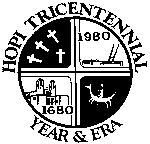History, Department of
Date of this Version
September 2008
Document Type
Book Chapter
Abstract
“As artists, we try to document every aspect of Hopi life. We know the Hopi way; we live it, we can taste, we can see, and we can smell Hopi.”
Spiritual essence is the heart of the Hopi way. It is the ceremonial way, but also it is the every-day way of Hopi, human life. It is the physical world of beauty which surrounds us in animals and plants, but also it is the spiritual world, because everything in nature has a spirit. Our concept of the Hopi way is that a spiritual essence touches every part of our lives; it exists as a very personal religion providing a belief about ourselves and how we live with each other and our surroundings. In a special way, it exists in our religious celebrations. It also exists in our art.
As a Hopi artist, I endeavor to bring to the canvas the real meaning of spiritual essence as it permeates the lives of our people. As Artist Hopid, we believe that we possess a faith and “a spiritual outlook so strong, that despite the hardships, it prays for all living beings to have fulfilling lives.”



Comments
Published in Hopi Nation: Essays on Indigenous Art, Culture, History, and Law, edited by Edna Glenn, John R. Wunder, Willard Hughes Rollings, and C. L. Martin (Lincoln, NE: UNL Digital Commons, 2008). Copyright © 2008 the Estate of Edna Glenn, Willard Hughes Rollings, Abbott Sekaquaptewa, Barton Wright, Michael Kabotie, Terrance Talaswaima, Alice Schlegel, Robert H. Ames, Peter Iverson, and John R. Wunder. All images and artwork are copyright by the individual artists; for a listing see pages 9-14.